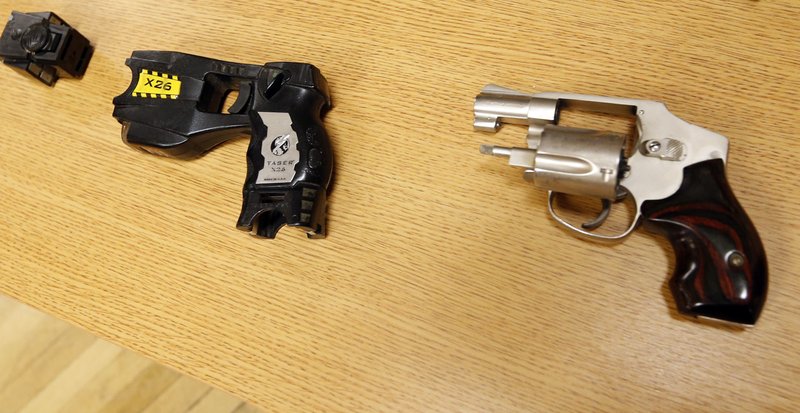SAN DIEGO -- Civil-rights advocates say that two recent shootings of unarmed black men by police officers -- both of whom were accompanied by officers using stun guns -- illustrate a breakdown in police training and communication and shows that some officers are too quick to turn to deadly force.
When Alfred Olango pulled out an object from his right pocket last month and assumed a shooting stance in a strip mall parking lot in a San Diego suburb, one officer opened fire with his pistol. The other officer simultaneously stunned Olango using his stun gun.
The Sept. 27 shooting death of the 38-year-old Ugandan who turned out to be wielding an electronic cigarette device came 11 days after another unarmed black man, 40-year-old Terence Crutcher, died in Tulsa after being shot by two officers simultaneously firing a gun and a stun gun.
"I think when one police officer feels it is appropriate to use a less lethal weapon like a Taser, and the other officer feels like the person has to be killed -- it suggests a real divergence in training," said Ezekiel Edwards, director of the American Civil Liberty Union's criminal-law change project.
[Read about recent fatal shootings by police across the country.]
He added: "I think it highlights that we have a serious problem in this country, which has been seen played out over and over again with police using lethal force in circumstances where it is not necessary and not justified."
Law enforcement experts, however, say it's not that simple because different officers don't necessarily have the same reactions for handling potential threats.
The decisions they make, the experts say, can be influenced by factors ranging from what officers see of suspects based on where they are standing, the extent of their police experience and information received from police dispatchers.
Officers increasingly work alone in patrol cars without partners, and the sharp electric sound made by a Taser or other stun gun when fired could prompt other officers with guns to pull the trigger in what is known as a "sympathetic firing."
And once an officer chooses to use a stun gun instead of a pistol, there often is no time to switch to a firearm if the dangerous situation escalates quickly, said Tim Dees, a retired police officer and police trainer who writes a column for the PoliceOne.com website.
"If there is a deadly threat to officers, you don't want to bring in something less lethal, because by the time you transition you could be dead," Dees said.
Stun guns like the ones made by Taser have been credited with saving thousands of lives by giving officers a safer alternative to guns.
But they are not meant for situations officers perceive as life threatening. The devices send dart-like electrodes into targets to cause neuromuscular incapacitation, the temporary suspension of the use of a person's voluntary muscles. They should be used in police situations where non-deadly force is appropriate, similar to how officers use pepper spray on crowds, said Steve Tuttle, a Taser spokesman.
People have died after being shot with Tasers, including a 66-year-old man in suburban Los Angeles last week. Officers could not drag him to safety to be treated by paramedics for 14 minutes because they were in a standoff with his brother, who was threatening police with a gun. Taser says its weapons do not kill.
Retired Salt Lake City Police Chief Chris Burbank agrees with the ACLU that police need more training to learn how to calm down potential threats without using any weapons at all.
Burbank said that in potentially violent situations, police often have an officer with a stun gun approach a suspect while other officers stay in the background with their guns drawn.
"You don't want the officer with the firearm being the one doing the talking, not in the heat of the moment," said Burbank, who retired in 2015 and now works for the Center for Policing Equity, a law enforcement think tank. "You want the officer who is providing lethal cover to be removed from the situation, not emotionally involved, so they have good judgment."
A Section on 10/10/2016

